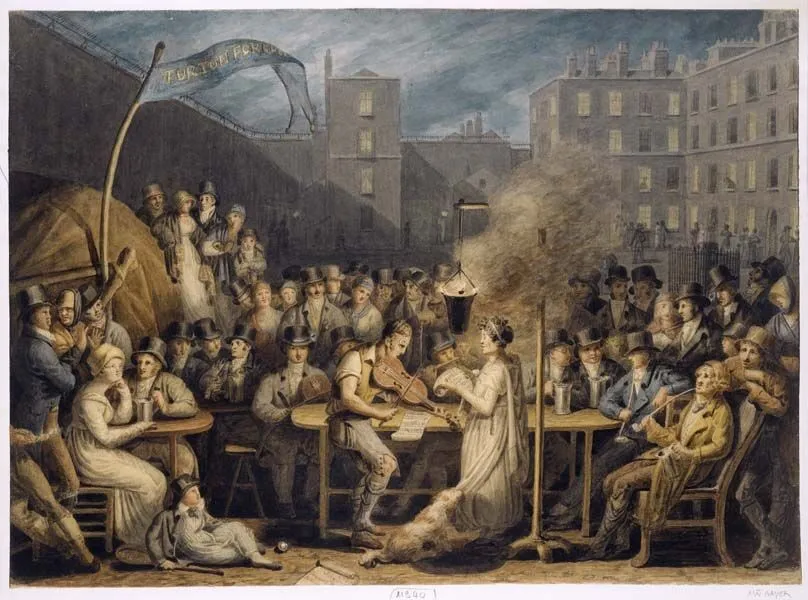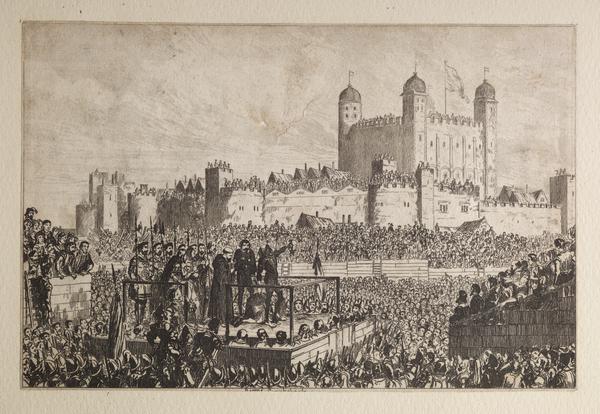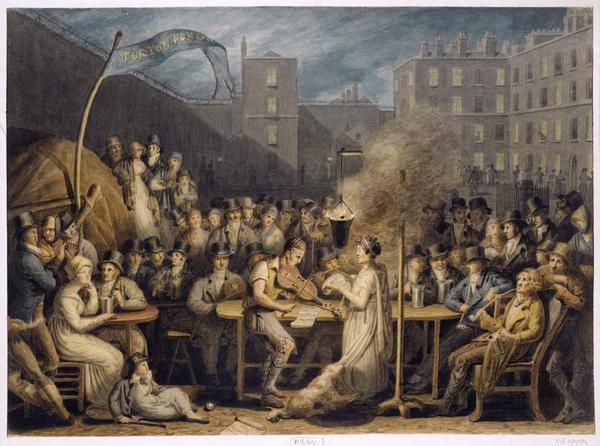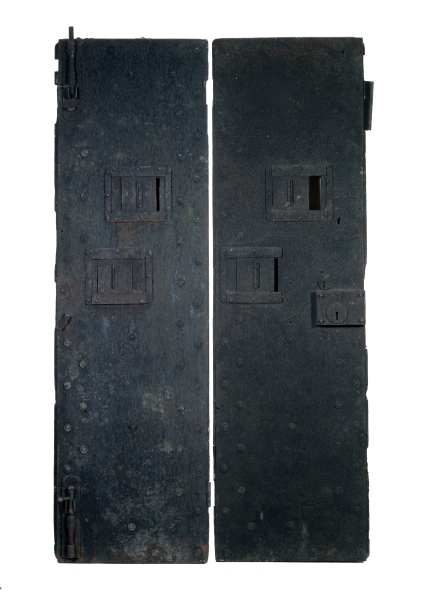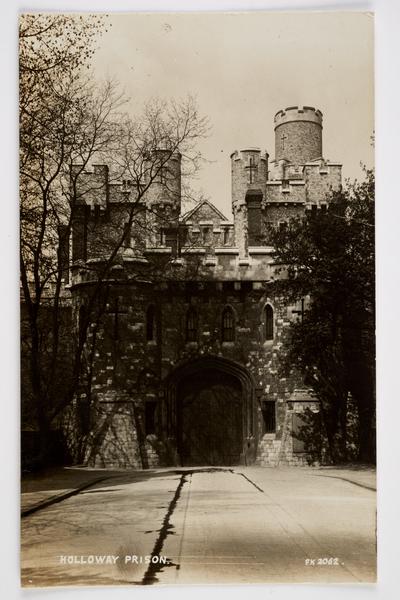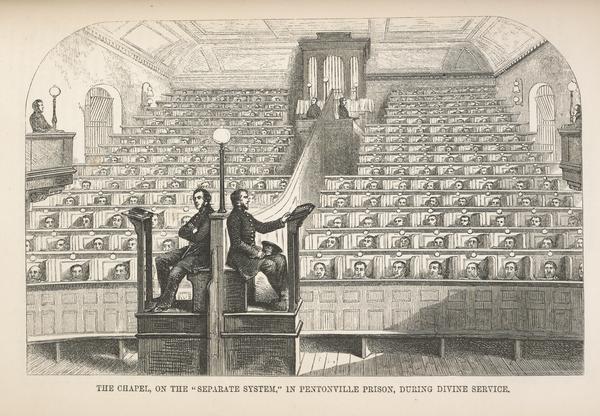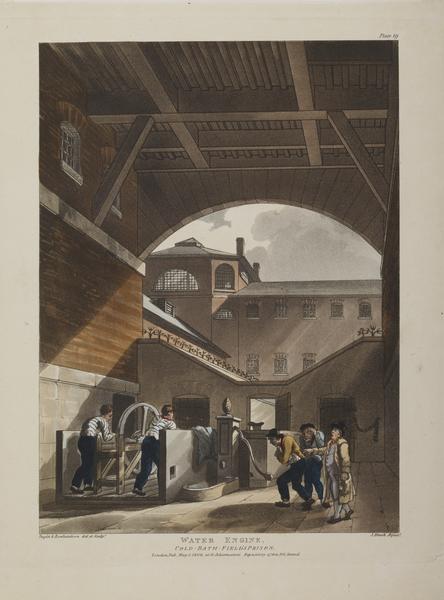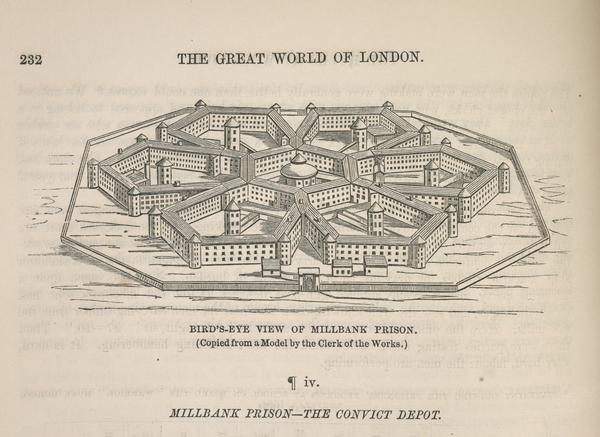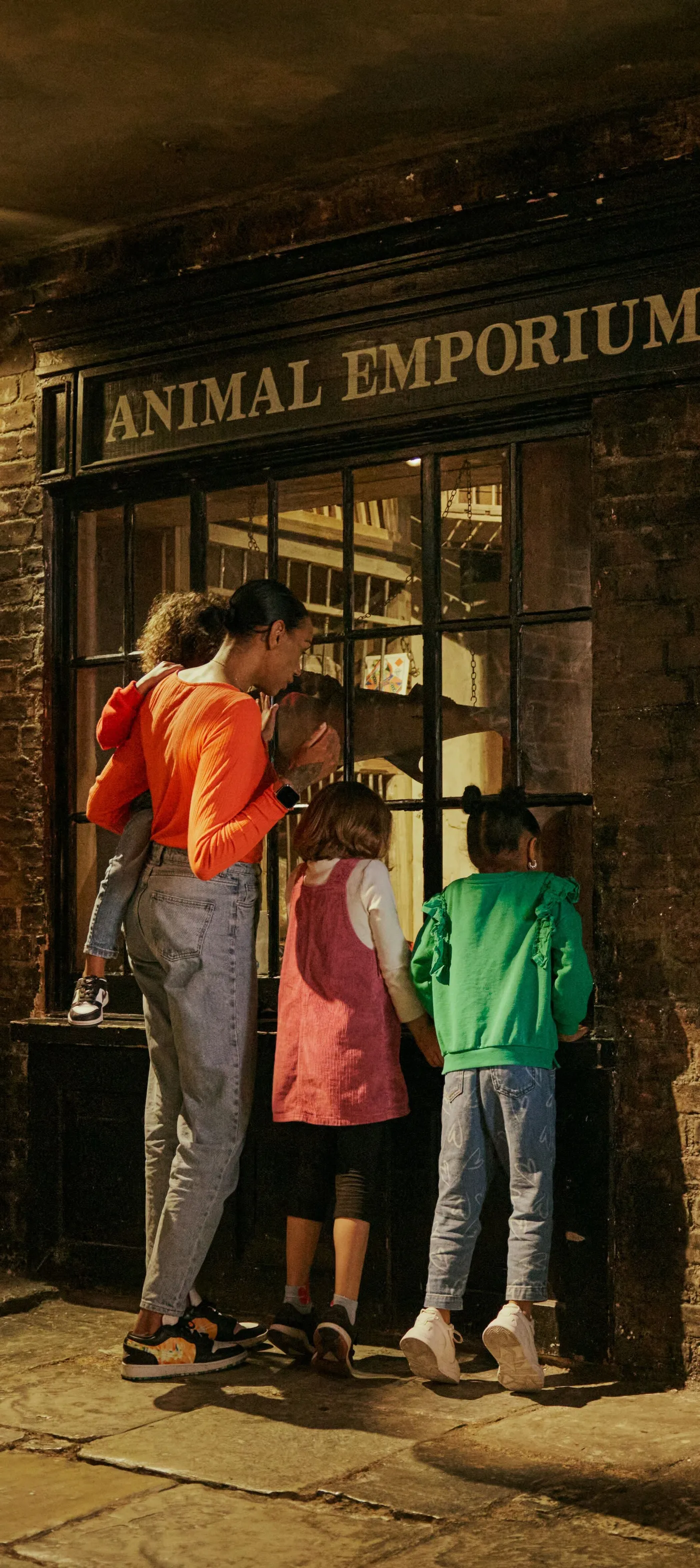The punishing past of London’s prisons
London has had many infamous prisons, known for their terrible conditions or the notorious criminals they’ve held. Many of those have now closed, but some built in the 19th century are still taking prisoners.
Across London
Since 1101
A brief history of prisons
Before the 18th century, prisons were used to hold people for a short time as they awaited trial or execution. They also housed people who’d failed to pay their debts. Conditions were usually terrible.
In the 18th century, public execution was the punishment for a wide range of crimes, including murder and theft. Many convicts were also transported – sent to overseas colonies, such as the US and Australia.
But towards the end of the century, prison reformers looked to the British prison system as an alternative punishment, and a chance to reform criminals.
In the 19th century, the prison population rose as public executions decreased. New prisons were built, often imposing hard labour and harsh rules on prisoners.
In the 1860s, both public executions and transportation were abolished. Executions continued in private, but prison sentences were the main form of punishment.
Life for prisoners slowly improved in the 20th century, but as a glance at the news will tell you, many problems remain.
The Clink
If you’ve heard anyone call a prison ‘the clink’, it’s thanks to this small prison in Southwark, which is mentioned in sources as far back as 1509.
In his 1603 Survey of London, historian John Stow described it as a place for people who “break the peace” on Bankside, an area outside the City’s control known for its wild entertainment and brothels. The Clink lasted until 1780, when it was burned down during the Gordon Riots.
Newgate Prison
From 1198 to 1904, Newgate was the main prison for the City of London and the county of Middlesex. It had a fearsome reputation, holding some of the most high-profile criminals in cruelly overcrowded, dirty conditions. This was where, in the 19th century, prison reformer Elizabeth Fry first tried to improve conditions for women prisoners.
Newgate was closely linked to London’s most famous court, the Old Bailey, which started out as a courtroom physically connected to the prison.

Newgate, the main prison for the City of London.
By the 1700s, most of the people accused of a crime punishable by death received a trial at the Old Bailey. Most were held at Newgate as they waited for their trial. And if convicted in court, they were returned to the prison to wait for their execution. The folk-hero Jack Sheppard – who actually escaped from Newgate twice – is just one example of those who made this journey.
After 1783, Newgate was also London’s main execution site, with prisoners executed in front of crowds of spectators outside the prison doors.
Tower of London
Originally a fortress built in the 1000s, the Tower accepted its first prisoner in 1101. From then on, it was a place to lock up anyone considered a threat to national security. It served that purpose for almost 800 years, housing Henry VIII’s second wife, Anne Boleyn, after the king accused of treason, and Guy Fawkes, one of the men who planned to blow up Parliament.

The execution of the Duke of Northumberland on Tower Hill in 1553.
The Tower was also sometimes used for the execution of royals or nobles, including Boleyn. Executions within the grounds were seen as a privilege, offering a more private death. Many more of the condemned had to face the public as they met their end on Tower Hill.
Josef Jakobs, a German spy captured during the Second World War, was the last person to be executed at the Tower in 1941.
Debtors’ prisons
From medieval times until 1869, anyone who couldn’t pay their debts might spend time in debtors’ prison. Many had to stay until the debts were repaid, or they struck a deal with the people they owed money to. In the 1700s, debtors made up the majority of those in prison.
London’s most famous debtors’ prisons were the Fleet and Marshalsea Prisons. Both were built before 1400, lasting for centuries until they were closed in exactly the same year – 1842.
Though conditions could be terrible, wealthier prisoners were often able to pay to improve their situation. A painting from our collection shows well-dressed prisoners enjoying an outdoor concert in the courtyard of King’s Bench Prison.
Most prisoners were men, but their wives and children were sometimes forced to join them. The family of the author Charles Dickens spent time in Marshalsea Prison, pushing 12-year-old Dickens into work to support them.
Prison hulks
When the American Revolutionary War began in 1776, Britain could no longer send its convicts across the Atlantic.
Instead, the hulks of old battleships began to be used as floating prisons.
It started as a temporary solution, but the ships were used for more than 50 years. In London, prison hulks were moored in the River Thames at Woolwich and Deptford.
The floating prisons became severely infested with rats and lice, and were plagued by cholera, typhoid and typhus, known as ‘jail fever’. Food was disgusting or almost non-existent. Unsurprisingly, there were many escape attempts.
Millbank Prison
Millbank was once the largest prison in London. It was completed in 1821 and closed in 1890. Tate Britain art gallery now stands on the site.
In 1862, the journalists Henry Mayhew and John Binny published The criminal prisons of London and scenes of prison life. They visited all London prisons for their research, including Millbank.
There they saw the ‘silent system’ in use. Prisoners couldn’t talk, and were whipped if they did. They were kept in separate cells for their first six months, after which most were moved to shared rooms where dozens slept, ate and worked together, making shoes or clothes.

An illustration from Mayhew and Binny's prison study, showing a male prisoner at Pentonville and female prisoner at Millbank.
Brixton Prison
Opened in 1820, Brixton Prison was originally called the Surrey House of Correction. It was a new type of prison that aimed to reform criminals through a harsh regime of punishment and reflection.
Brixton was the first to install a treadmill, where inmates were forced to climb revolving steps for up to 10 hours, turning millstones to grind flour. A similar ‘hard-labour’ treadmill was installed at Coldbath Fields Prison in Clerkenwell. There, the pointless task was known as ‘grinding the wind’.

The treadmill at Surrey House of Correction, which later became Brixton Prison.
Brixton became a women’s prison in the 1850s. When Mayhew and Binny visited, they saw women hard at work in the wash house, diligently doing their needlework during a “silent hour”, and caring for their young children in the nursery.
Brixton was reopened as a men’s prison in 1902 and has remained open into the 21st century. Our collection includes a 1996 painting of the psychiatric wing by Paul Clements, who was a librarian at the prison.
Pentonville Prison
Pentonville opened in north London in 1842 with a design that became the model for dozens of other prisons built in the 19th century.
Mayhew and Binny observed its separate system, which isolated prisoners as much as possible. Prisoners wore masks to stop them recognising one another. Mayhew and Binny felt the masks had been designed "with every kindness and consideration to the prisoners, in order that their faces might not be seen in their shame".

Prisoners exercising under the separate system at Pentonville.
In the early 20th century, the women’s suffrage campaigner Hugh Franklin was imprisoned at Pentonville, where he continued his protest with a hunger strike.
Following the end of public executions in the 1860s, Pentonville became one of the main prisons for executions behind closed doors. Between 1902 and 1961, 120 men were hanged there. The prison remains in use today.
Holloway Prison
Built in Islington in 1852, Holloway housed both men and women for its first 50 years. The writer Oscar Wilde was held there before his trial for “gross indecency” – what the courts called his romantic relationships with other men.
In 1903, Holloway became a women’s prison. It soon welcomed Suffragettes who’d broken the law campaigning for women’s voting rights. Many went on hunger strike while imprisoned and were violently force-fed.
During the Second World War (1939–1945), supporters of fascism were locked up at Holloway, including Oswald Mosley, who was the leader of the British Union of Fascists, and his wife, Diana.
In 1955, Ruth Ellis was hanged at Holloway for murder – the last woman to be executed in Britain. It was a high-profile case and a hugely controversial execution. The case built support for the abolition of the death penalty for murder, which was finally achieved in 1969.
The imposing old Victorian prison was demolished and rebuilt in the 1970s. Holloway was finally closed in 2016 to be replaced by a housing development.
Wormwood Scrubs
Built in 1874, this Victorian prison near White City in west London remains open today, with space for over 1,000 men. In 1966, it was the scene of a daring escape by George Blake, a Soviet agent who’d once worked for MI5. Other infamous prisoners held at Wormwood Scrubs include the serial killers Ian Brady and Peter Sutcliffe.

Wormwood Scrubs in west London.
Belmarsh Prison
When it was opened in 1991, Belmarsh became the first prison built in London for over 100 years.
Belmarsh is a high-security prison in south-east London, designed to hold prisoners who are considered the greatest threat to the public if they escape. That includes those held for terrorism charges. Conditions inside the prison have earned it the nickname ‘Hellmarsh’, indicating that London’s modern prisons continue to have a fearful reputation.

Belmarsh in south-east London.




